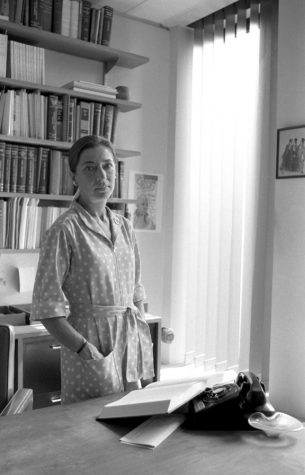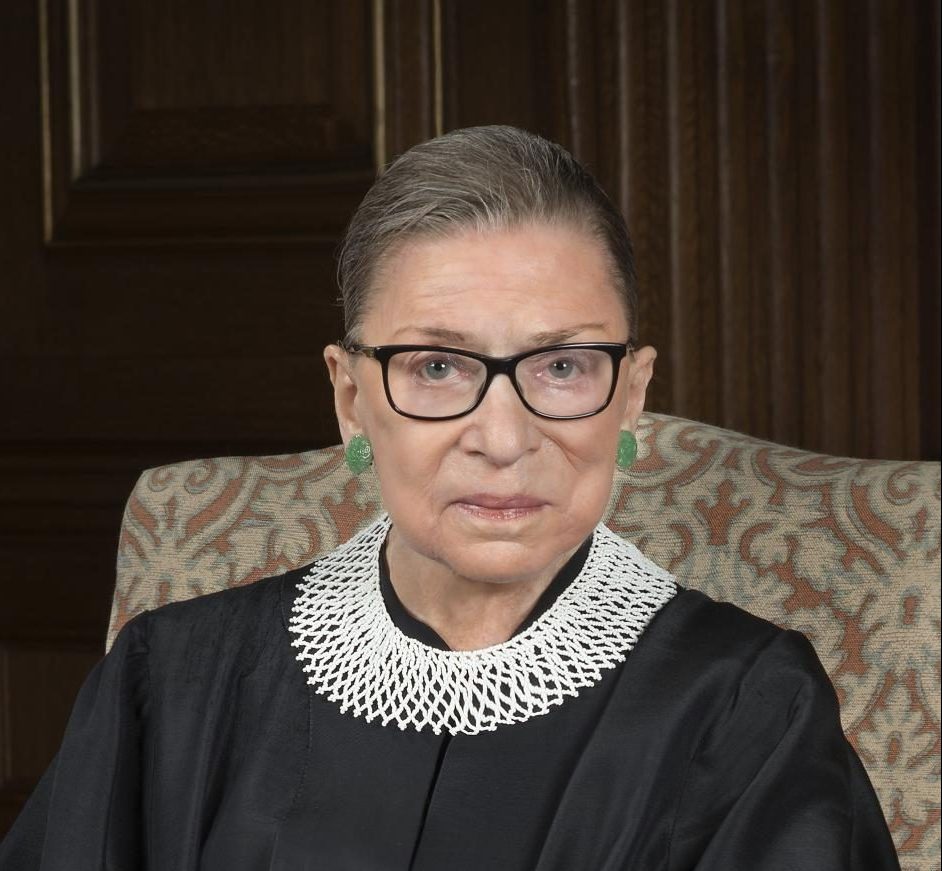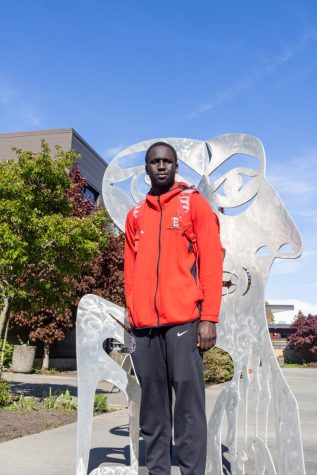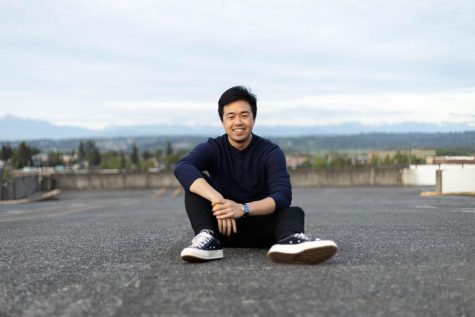The Life of the Notorious R.B.G.
Supreme Court Justice Ruth Bader Ginsburg.
On Sept. 18, 2020, Supreme Court Justice Ruth Bader Ginsburg, one of our nation’s most influential people in advancing civil rights and equality, succumbed to complications from pancreatic cancer at 87 years old.
Her fans knew her as “The Notorious R.B.G.” a nickname bestowed upon her in 2013 by second-year New York University student Shana Knizhnik. The name that started on Tumblr to emphasize Ginsburg’s dissent in the Shelby County v. Holder Supreme Court case would become viral. Ginsburg embraced the title derived from fellow Brooklynite, Biggie Smalls (The Notorious B.I.G.), recognizing the endearing moniker as a reference to her credibility amongst her peers and the public, much akin to the deceased Smalls in the New York rap community.
Born Joan Ruth Bader on March 15, 1933, at Beth Moses Hospital in Brooklyn, New York, the second daughter to Celia Amster and Nathan Bader. Ginsburg began going by her middle name of Ruth when she started school. Her mother learned the class had a bevy of girls named Joan and wanted to prevent confusion. Her mother would pass away from cancer the day before Ginsburg’s graduation from James Madison High School in 1950.
It was while attending Cornell University in Ithaca, New York that Ginsburg met her future husband, Martin D. Ginsburg. She graduated with a bachelor’s degree in government in 1954 with high honors. One month later, Ruth Bader would become Ruth Bader Ginsburg.
The newlyweds moved to Fort Sill, Oklahoma, where her husband was stationed for Reserve Officer Training in the Army Reserves. Ginsburg took a job at the Social Security Department and was later demoted after becoming pregnant with her daughter in 1955. This wouldn’t be the last time she faced sexism.
While at Harvard Law School in 1956, she was one of nine women in a class of roughly 500 people. The dean of the school would ask the female students why they wanted to take the place of a man. Ginsburg transferred to Colombia Law School when her husband took employment in New York City where she earned her law degree in 1959.
Ginsburg would face sexism again in 1960 when she was rejected for clerkships regardless of her exceptional grade scores and several strong recommendations from Harvard and Columbia professors. It took Colombia law professor Gerald Gunther threatening Judge Edmund Palmieri to never send another student to him if he didn’t accept Ginsburg for her to get a clerkship. She ended up being a clerk for Judge Palmieri for two years.
It wasn’t until Ginsburg was doing research for her book at Sweden’s Lund University, that she would see a level playing field for both genders in the workplace. Almost a quarter of the law students were women and one judge she was observing was working in her eighth month of pregnancy. This experience would shape her views on gender equality in the workplace.
Following this research, Ginsburg would receive her first professorial position at Rutgers University, where she would stay until 1972. Rutgers justified paying Ginsburg less than the male teachers because of her husband’s higher than average income.
Throughout the 1970s, Ginsburg would argue a total of six gender discrimination cases at the Supreme

Court of which she won five. The plaintiffs were both men and women facing gender inequality, such as Weinberger v. Wiesenfeld, 420 U.S. 636 (1975), a case where a man was denied survivor benefits from his wife’s Social Security. She argued as amicus to challenge the difference in housing allowances between female and male service members in Frontiero v. Richardson, 411 U.S. 677 (1973). In 1973, Ginsburg was the first to file a challenge against The Eugenics Board of North Carolina’s involuntary sterilization of the “mentally deficient.”
She was nominated to the U.S. Appeals Court by then-President Jimmy Carter on April 14, 1980. On June 18, 1980, The U.S. Senate confirmed her to replace the deceased Judge Harold Leventhal. It was on the U.S. Court of Appeals where Ginsburg befriended future conservative Supreme Court Justice Antonin Scalia and controversial Supreme Court nominee, Robert Bork.
Tim Turner, an EvCC student recalls a quote from deceased conservative Supreme Court Justice Antonin Scalia, “Having had the good fortune to serve beside her on both courts, I can attest that her opinions are always thoroughly considered, always carefully crafted and almost always correct (which is to say we sometimes disagree). That much is apparent for all to see. What only her colleagues know is that her suggestions improve the opinions the rest of us write and that she is a source of collegiality and good judgment in all our work.”
Ginsburg joined her colleague Scalia on the Supreme Court on June 23, 1993, when she was appointed by then-President Bill Clinton as a moderate judge. She had gained a reputation for her moderate views during her time in the U.S. Court of Appeals. As time went on, some viewed her closer to liberal than moderate due to a shift in the country’s conservative views.
Over the decades, Ginsburg has made significant changes to our country’s social and political landscape. Today, it is more common for men to be the caregivers of the household and women being the breadwinners than in the 1970s or 80s, Ginsburg helped make that happen. Same-sex couples can get married and enjoy the same rights as heterosexual couples and raise their families in peace, again, with the help of Ginsburg.
Staff and students of EvCC remember Ginsburg for her contributions to the US;
Dr. Steven Horn, EvCC Political Science Department:
“RBG was certainly an important figure in the fight for women’s equality, and for equality and fairness in general. While she thought that producing social change was best left to the greater society and elective branches of government rather than the courts, she wrote powerfully from her seat on the Supreme Court about particular cases of import, advocating for the expansion of opportunity and fairness for women in the workplace, in education, and in relation to their personal choices.
In her later years on the bench she was primarily known for her powerful dissenting voice; perhaps the most important of those opposed the majority decision in Shelby County v. Holder (2013), which gutted the 1965 Voting Rights Act by allowing states with a history of voting discrimination and exclusion to change their voting requirements without getting “preclearance” — assuring that the changes were not discriminatory — from federal courts, which had been required since the law was passed 50 years prior. As RBG suggested, as soon as the preclearance requirement was dropped, state after state moved to make it more difficult for minorities and poor Americans to vote.
And of course, it is impossible to comment on RBG’s passing without noting that it gives President Trump and Republicans in the Senate the opportunity to drag the Court even further to the right than it already is.”
Dr. Beverly “Bev” Farb, EvCC Sociology Department:
“Justice Ruth Bader Ginsburg was a hero. She opened so many doors that used to be locked tight. For example, she graduated at the top of her class from law school, proving that women could compete. That was back in the 1950s when such a thing had never been heard of. Later, she became the first woman tenured professor at Columbia University. Now… she was NOT the first woman on the Supreme Court… that was Sandra Day O’Connor. But Ginsburg was the second!
Ginsburg did not rule on the #MeToo movement, but her encouraging words gave courage to those who were determined to break the secrets surrounding sexual abuse on the job.
You probably know that Ginsburg was the deciding vote on legalizing gay marriage in all 50 states. She also upheld Obama Care. Even those who strongly disagree with these decisions respect her arguments and her capacity to weigh competing concerns.
Ginsburg is a role model, not only for professional women, but for activists of every kind. She showed how to push through obstacles, and she made an initially hostile system work for her. Go, Ginsburg! I join the nation in missing her … and in praying that her replacement can rise to the bar.”
Jessica Pimienta, a 20-year-old business major at EvCC states, “I am extremely saddened by her passing; she left a legacy in this country. Her dying wish may not be honored but her work and strength will never be forgotten. It is our turn to make sure her work was not done in vain.”
On Friday, September 25, 2020, Ruth Bader Ginsburg became the first Jewish person and the first woman to lay in state at the US Capitol. She was laid to rest next to her husband in Arlington National Cemetery.
To read more about Ruth Bader Ginsburg, visit the EvCC Library Media Center. https://everettcc.libguides.com/evcc-library
Gender Rights
United States v. Virginia, 518 U.S. 515 (1996)
Ledbetter v. Goodyear, 550 U.S. 618 (2007)
Reproductive Rights
Stenberg v. Carhart, 530 U.S. 914 (2000)
Gonzales v. Carhart, 550 U.S. 124 (2007)
Whole Woman’s Health v. Hellerstedt, 579 U.S. 15-274
Search and Seizure Rights
Safford Unified School District v. Redding, 557 U.S. 364
Herring v. United States, 555 U.S. 135 (2009)
Voting Rights and Diversity
Shelby County v. Holder, 570 U.S. 529 (2013)
Gratz v. Bollinger, 539 U.S. 244 (2003)
Native American Rights
Strate v. A-1 Contractors, 520 U.S. 438 (1997)
City of Sherrill v. Oneida Indian Nation of New York
Wagnon v. Prairie Band Potawatomi Nation (04-631) 546
Disability Rights
Olmstead v. L.C. (98-536) 527 U.S. 581 (1999)
Friends of Earth, Inc. v. Laidlaw Environmental Services
(TOC), Inc. (98-822) 528 U.S. 167 (2000)

What living person do you most admire?
My wife.
Where would you most like to live?
If I didn’t already live in Everett, I would live in Vancouver,...


















Vanessa L McVay • Nov 7, 2020 at 1:02 pm
Nice story, Rick. Glad to see this in The Clipper!